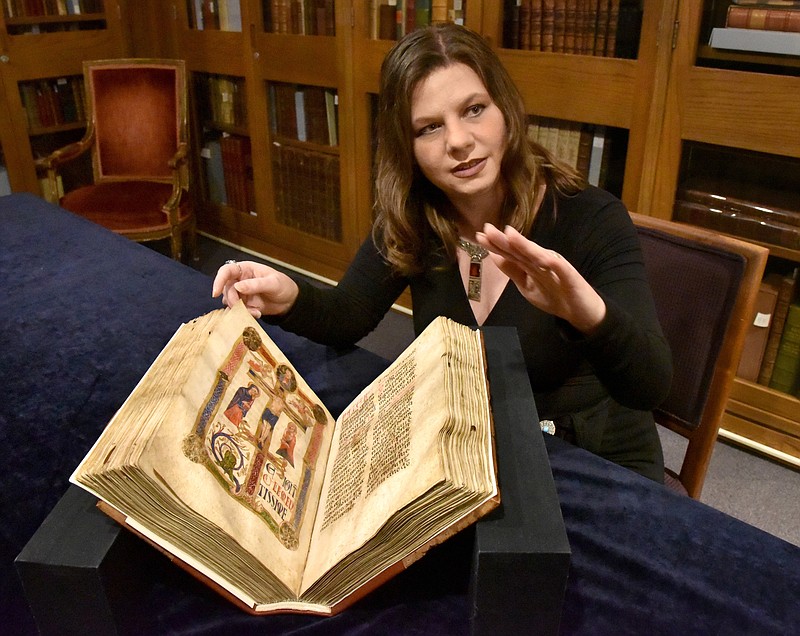BALTIMORE - This is the book that set St. Francis on the path to poverty.
The 12th-century collection of prayers is slightly larger than a sheet of notebook paper. A corner of the beechwood boards covering the manuscript has crumbled away and the surface is delicately pitted with wormholes. Restorers found the dried carapace of an unidentified species of insect trapped inside the pages.
It seems fitting that even after an ambitious and painstaking two-year restoration, the book that persuaded the man from Assisi to renounce earthly goods - and that resulted in the founding of the Franciscan order - appears as humble and unprepossessing as a monk's brown habit.
Now, the book has its own public exhibit at the Walters Art Museum for the first time in nearly 40 years.
"The St. Francis Missal" is an intimate show in which the famous volume is shown with about two dozen paintings, ceramics, ivories and illustrated manuscripts taken from the museum's collection.
Perhaps to compensate for the plain appearance of the star attraction, many of the artifacts surrounding the missal possess an extraordinary and seductive beauty. There's no dearth of dazzle on display - including a 14th-century diptych said to contain fragments from the tunics of Saint Francis of Assisi and his most famous female follower, Saint Clare. The little artwork of scenes from Christ's nativity and crucifixion are reverse painted on glass, and is so fragile that it's going on public view for the first time in the Walters' 86-year history.
The show has been generating excitement internationally, especially among historians and members of religious orders.
"St. Francis is one of the most beloved saints in history," said Lynley Anne Herbert, the museum's curator of rare books and manuscripts.
"Over time, the missal has acquired the status of a religious relic. It's the most requested book in our collection. It inspires pilgrims from all over the world to come here to see it. At one point we couldn't even open the missal anymore because it was in such fragile condition. Our visitors didn't care. They just wanted to be in its presence."
The missal is considered to be extra sacred because it is considered "an object of touch," according to Herbert. St. Francis himself is thought to have turned the ancient pages on a morning in 1208 in the altar of his parish church, San Nicolo di Piazza, which was located in Italy until it was damaged by an earthquake in the 19th century. Worshipers believe that the missal retains a trace of the saint's spiritual aura.
According to several accounts of Francis' life written shortly after he died, he was inspired to dedicate himself to a life of poverty in 1208 after he and two friends - all wealthy young men - had been up all night debating about how they could best serve God.
When they couldn't agree, "Francis basically said, 'Let's let God decide,' " Herbert said.
"They walked around the corner to the church and flipped open the missal on the altar three times, once for each member of the Trinity." (Roman Catholics believe that one Supreme Being is manifest in three entities: God the Father, God the Son and God the Holy Spirit.)
"Each time, they opened the missal to a random page," Herbert said. "Each time, the text told them to give up all their earthly goods and follow Christ. That was the foundational moment of the Franciscan Order."


